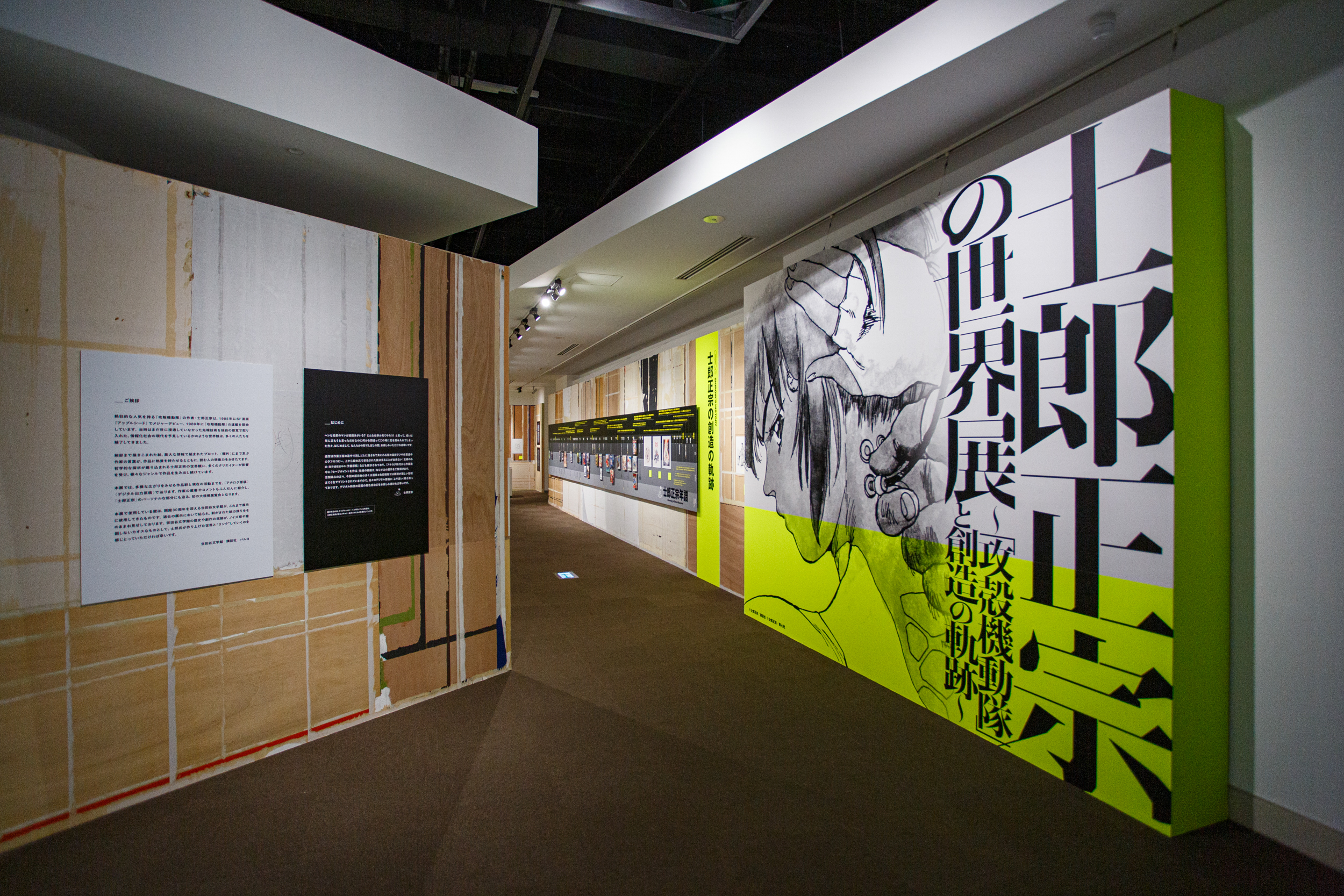
Who is Shirow Masamune…? A mysterious manga artist who has been crafting astonishingly high-resolution visions of the future ever since the age when pagers ruled the world.
Text: Satoshi Asahara / Photo: Yusuke YamataniExpo 2025 in Osaka publicizes advanced technology from its many international pavilions, including exhibits like the flying car showcases on April 14, two days after the Expo’s opening. In late September, an Osaka cosmetics company and textiles industry player will be teaming up to reveal “clothes that turn their wearer transparent” developed as an application of the technologies for optical camouflage. The “future” depicted in the science fiction manga and anime of the past is steadily leaving the realm of the fictional.
And out of such works, one with a passionate fan base – the Ghost in the Shell by Masamune Shirow – is drawing particular attention. The manga began its run in 1989. Its story focuses on the protagonist, whose entire body has been “cyberized” (made into a cyborg), Motoko Kusanagi and her battles with criminals while using technologies like optical camouflage. It also bears mentioning that the story depicts an advanced information society in which a technology known as “cyberbrains” is omnipresent, allowing brain-network interfacing. This was shockingly prescient when considering the work was created in a time when pagers were commonplace.
It would be a waste to limit enjoyment of this “future forecast” with its detail – astonishing for other creators around the world – to just a core fan base. And so, for this feature we ventured into the venue for The Exhibition of The World of Shirow Masamune -“The Ghost in the Shell” and The Path of Creation-, held at the Setagaya Literary Museum starting April 12.
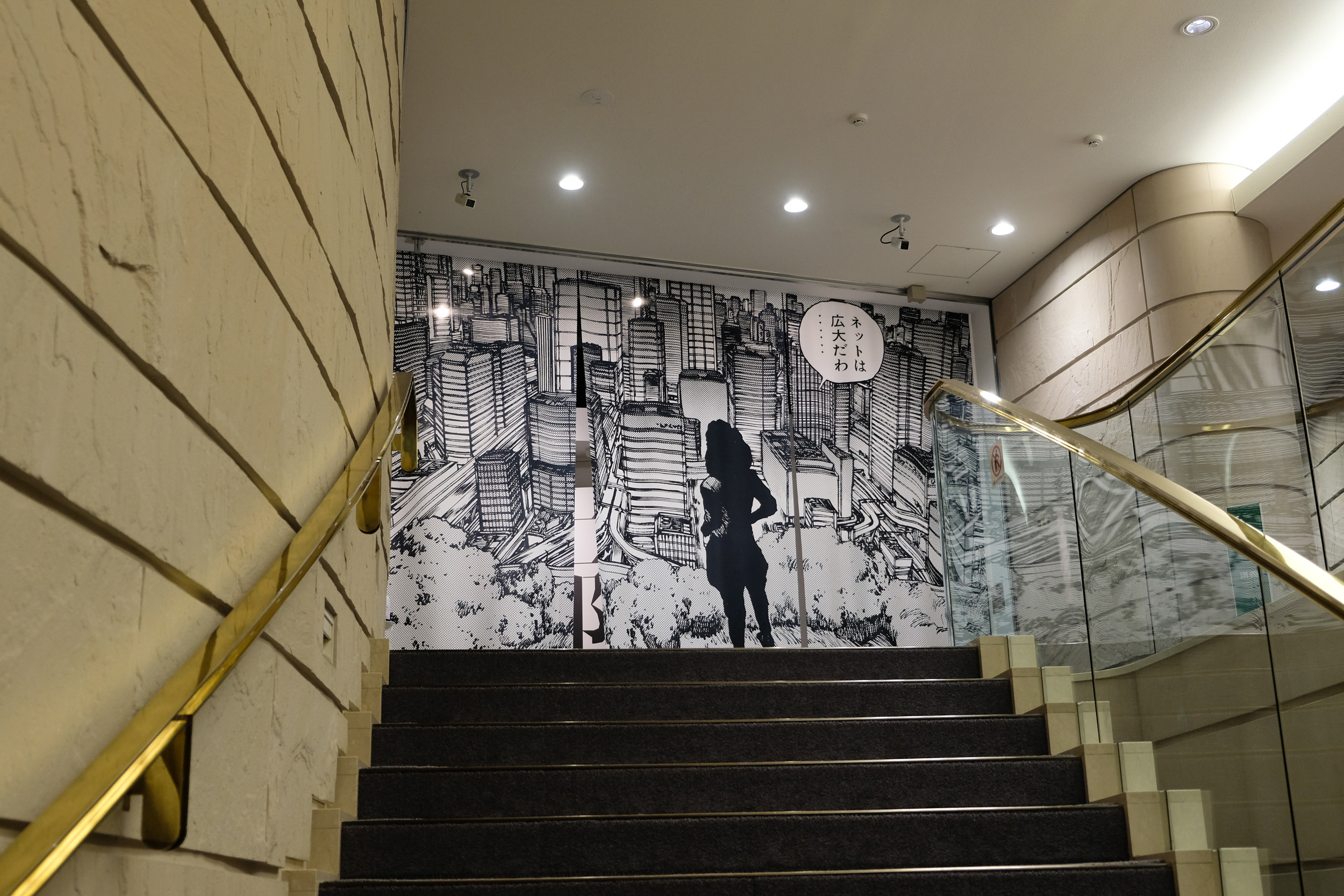
In this era, advanced information-processing AI is a vital part of life, and we are entering times in which prosthetics allow runners to achieve the fastest times in sporting history. Humanity may now have one foot in the world depicted by Shirow Masamune. It seems likely that we will see humans elect to “merge with machines” in the near future in order to elevate their mental and physical capabilities.
With this in mind, on visiting The Exhibition of The World of Shirow Masamune -“The Ghost in the Shell” and The Path of Creation- at the Setagaya Literary Museum, the first thing a visitor beholds is a board with a message from Shirow Masamune.
“If you thought, ‘A manga artist with a weird name? I want to see what he did!’ and visited for that reason, or just wanted to get out of the heat and found yourself here, it’s a pleasure to meet you. I hope you enjoy yourself in one way or another.”
His name isn’t the only “weird” element. Masamune is a popular manga creator who has seen numerous works converted to anime, with the Ghost in the Shell series foremost, yet is known for almost never making public appearances. According to his editor Takeshi Katsurada at Kodansha, Masamune still doesn’t have a smartphone and the two communicate via letters, not email. Precisely because of the mysteries surrounding the individual, this major exhibition – the first of his career – is a precious opportunity to experience the legacy of a great artist with his personal commentary.
In addition to analog manga works and digital copy, this exhibit also showcases roughly 440 pieces including the artist’s tools and personal library, comprising a total of 11 chapters ranging from the diverse works of Shirow Masamune to his current endeavors.
Beginning with Chapter 1, “The Creativity and Path of Shirow Masamune,” the exhibit gives visitors a timeline of works leading up to the present. Born in 1961, Shirow Masamune says he was aware he would make a living by drawing pictures for as long as he can remember. However, it was the winter of 1970 in which he had the experience that gave him his direction as an artist. He tells us that an encounter with “Conway’s Game of Life” (a computer game simulating the birth and death of living things), the creation of a British mathematician, gave him the inspiration that formed the framework that runs through both Appleseed and the Ghost in the Shell, later works that would come to represent him.
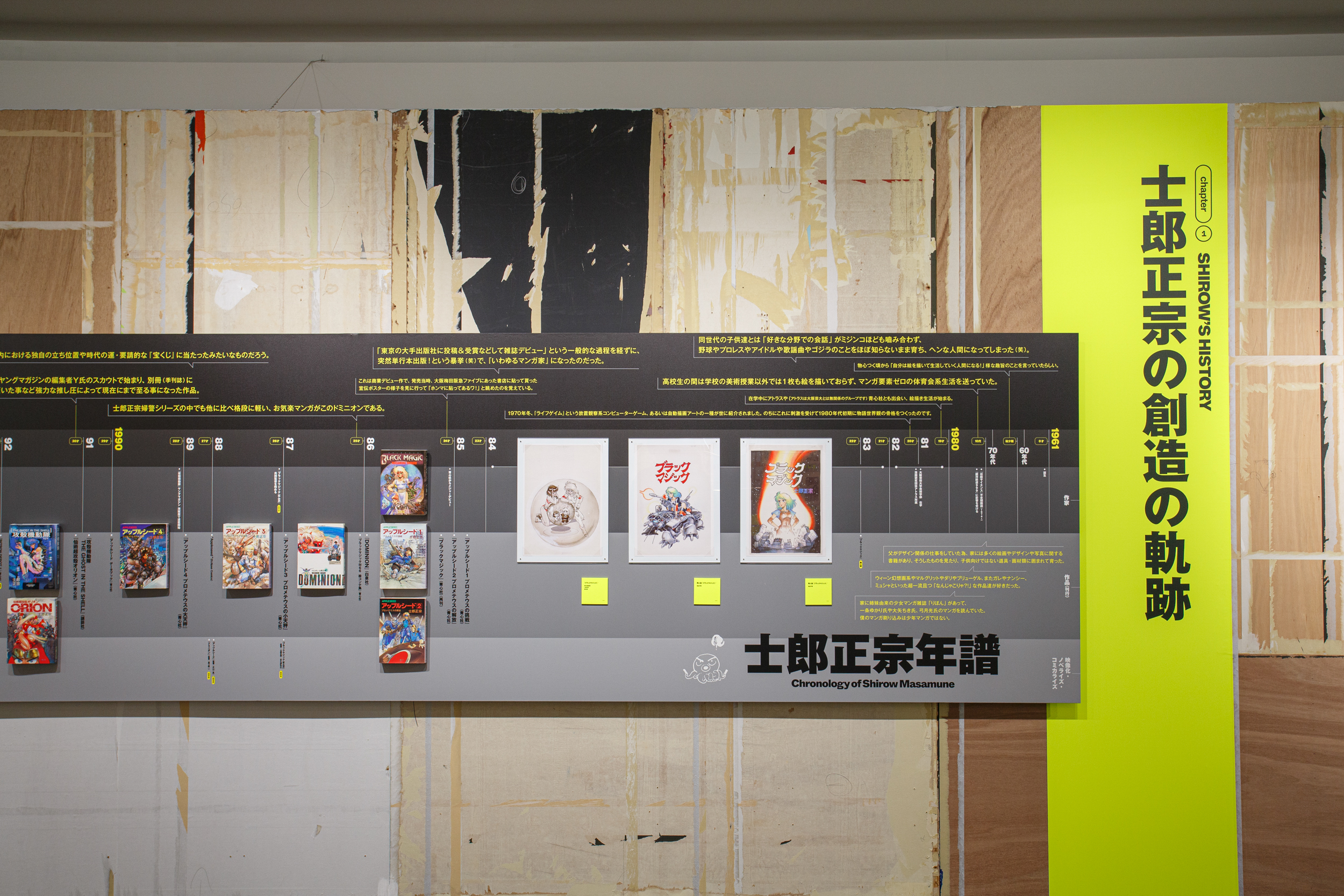
Chapter 2, “The Artistry of Shirow Masamune,” showcases the papers and tools used in his work, as well as how he uses them. There is also a section covering works that influenced the author, from the journal Science to the biology paper Mushi (insects) and the American science-fantasy comic magazine HEAVY METAL, spanning a wide range of specialized genres. And, although it goes without saying, the exhibit also features countless specialist pieces on firearms. For those who want a deeper look into the mind of this eccentric, we recommend securing a copy of the Nikkei Science special feature The Anthropocene, his particular recommendation, presented alongside the following comment:
“It’s about how the climate situation is dire, inequality is dire, and everything from gene editing to life extension, AI, space exploration, and even the distant future (a trillion years from now). I think everyone who enjoys the more exhausting parts of my manga would love it (but don’t forget the articles are a bit dated now).”
It also bears mentioning that the reason that the Ghost in the Shell‘s famous AI-equipped think tanks, the Fuchikomas, have become iconic in cyberpunk and remain strangely compelling even over the years is likely because of their designs backed by Masamune’s overwhelming body of knowledge. The work also depicts optical camouflage as a technology on its way out, and Masamune clarifies the reasons he chose to portray this in his commentary. The ability to enjoy these future forecasts too realistic to be called “imaginary” is one key element of this exhibit.
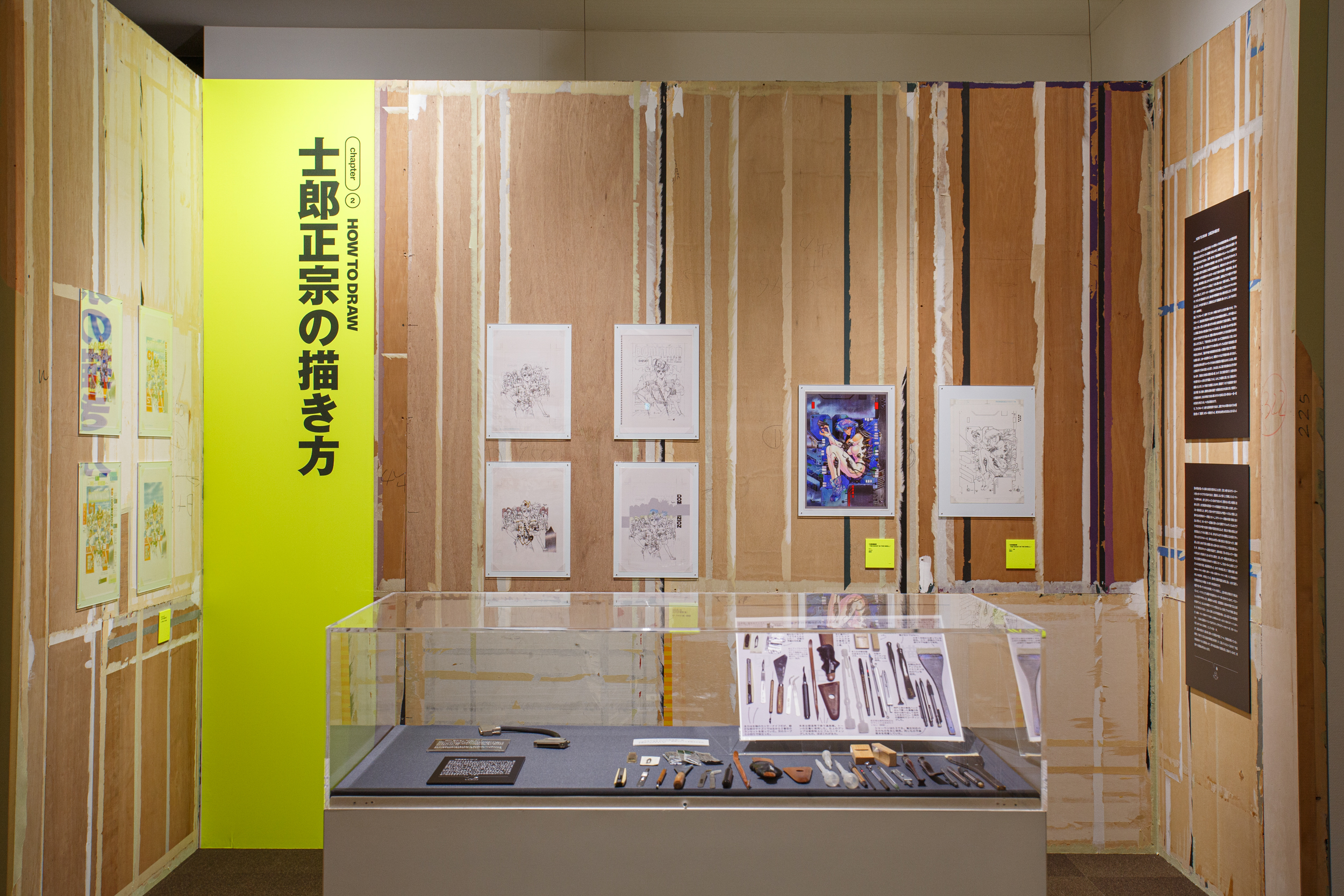
Subsequent chapters showcase the original copy used in his most renowned works, with zoomed-out works showing characters from a distance and stunning viewers with the density of detail included in background buildings, vehicles, and more. In addition to this level of detail in each panel, the aforementioned Mr. Katsurada says in astonishment “Shirow’s works are on another level in terms of the density of their settings. He incorporates conceptual detail on such a level that it’s pathological.” And in fact, the Ghost in the Shell features numerous scenes with extensive notes in the margins between cells, detailing unique technologies such as cyberbrains. This level of information and unmatched imaginative capacity is not only appreciated by manga fans around the world, but it has also won the love and respect of creative professionals.
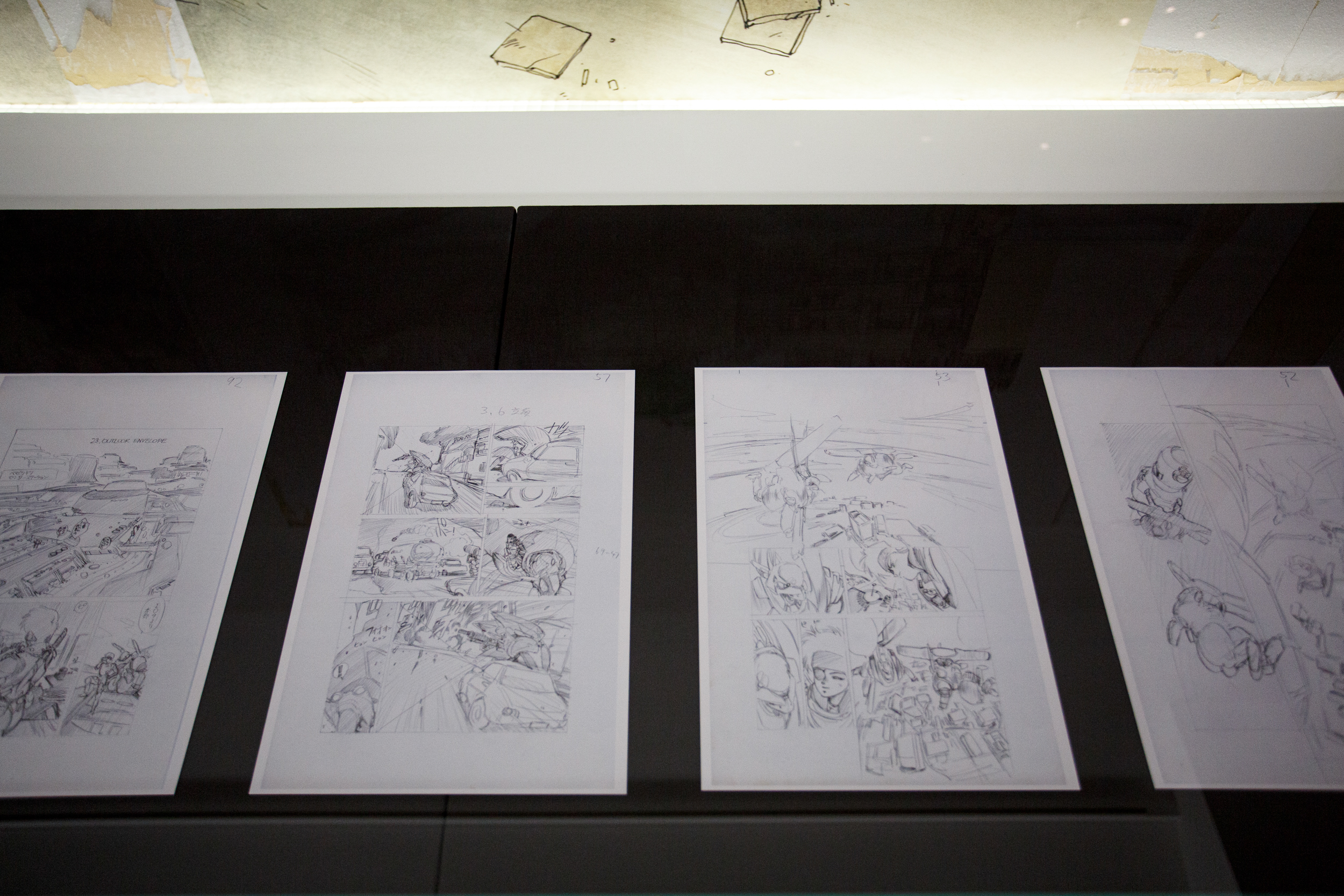
Graphic design for the exhibit was handled by Kei Sakawaki and Hiroaki Hidaka, and the spatial composition was handled by Torafu Architects. The final chapter exhibited collaborative works with a diverse range of creators including Ilya Kuvshinov (Russian illustrator), Kazuto Nakazawa (animation director), Hiroyuki Kitakubo (animation director), Katsuya Terada (manga artist), Tsutomu Nihei (manga artist), and other renowned anime and manga creators, as well as diverse artists such as Kosuke Kawamura (collage artist), Yu Nagaba (illustrator), and Jiro Konami (photographer), among others. This openness to the brilliance of others is part of the distinctive depth of Shirow Masamune and has fed into his works’ historic conversions in the realm of anime, including Ghost in the Shell animations by Mamoru Oshii, Kenji Kamiyama, and Kazuchika Kise.
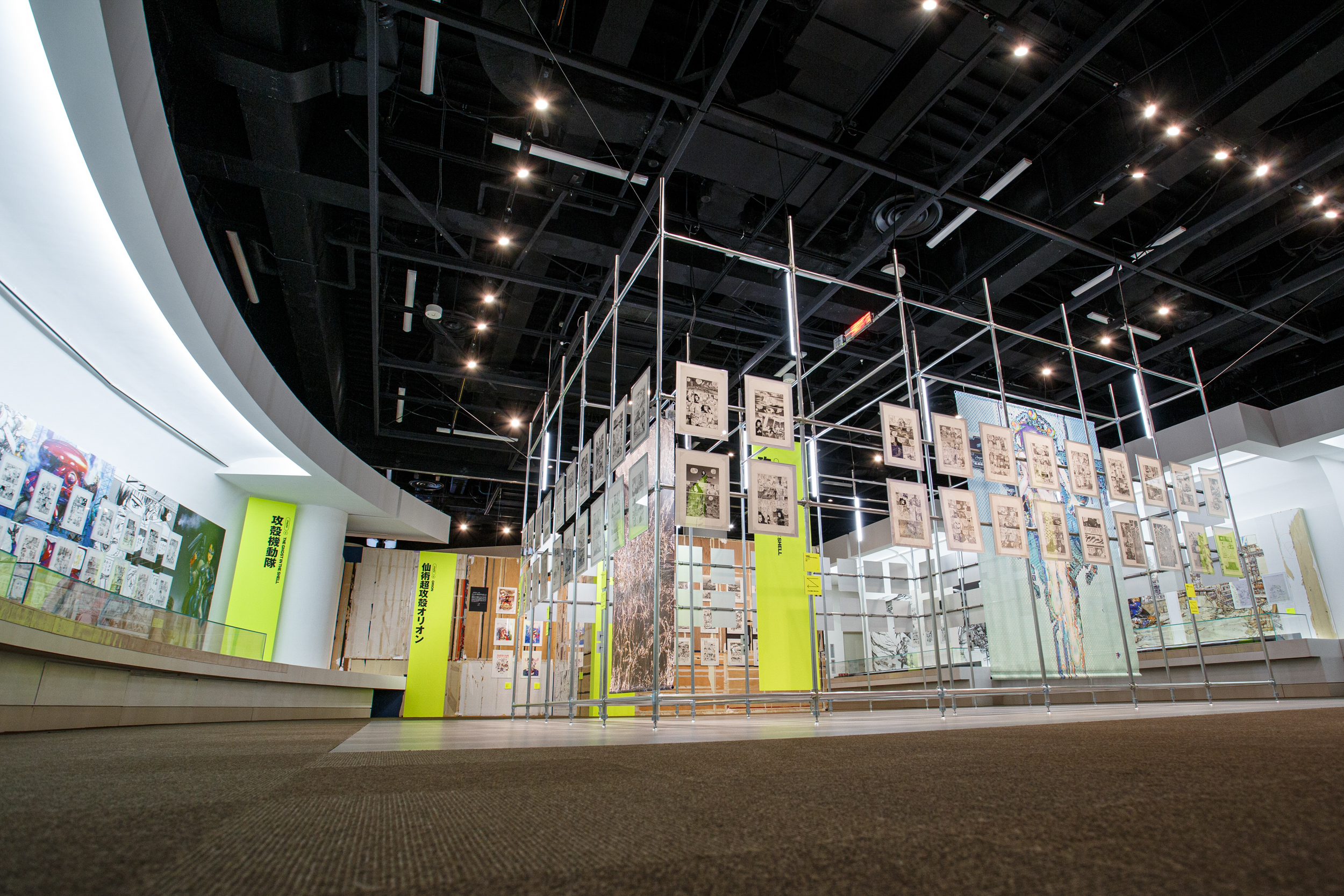
Moreover, a new THE GHOST IN THE SHELL anime has been announced for 2026, with promotional video also featured at the exhibit. The anime’s production will be handled by Science SARU, renowned for works such as Keep Your Hands Off Eizouken! and Dandadan. This article would go over 30,000 words if we attempted to convey the contents of each chapter in detail; in short, the space as a whole is densely packed with information.
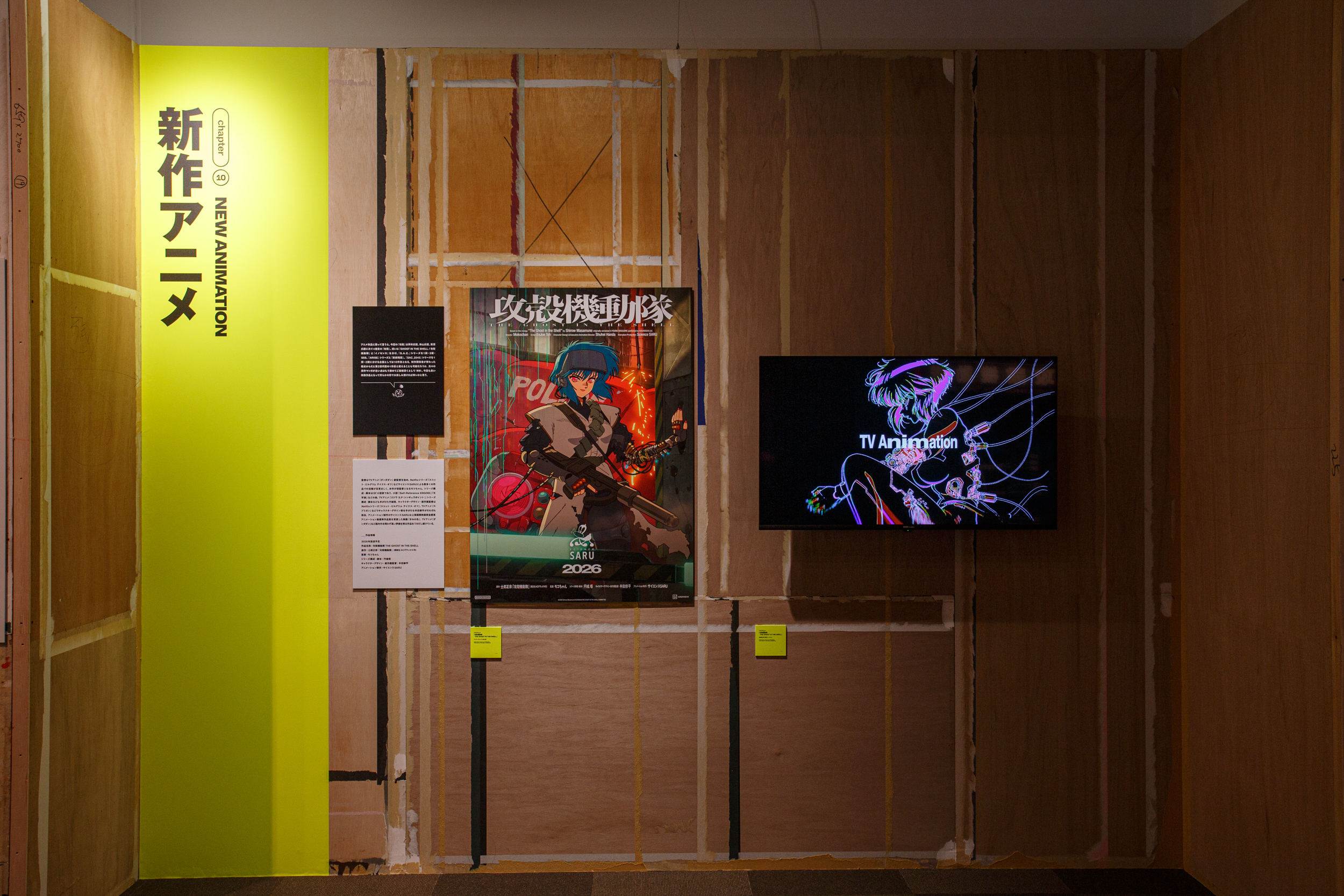
In the end, for those who struggle to answer the question of just who Shirow Masamune is, the author’s commentary throughout the exhibit seems to show self-awareness on this point. He could just be a prophet who actually sees the future. He laments, saying “I have a number of plans and works that are unfinished or left dead in the water and feel that I wouldn’t have enough time for them even if I had 100 years to work.” But if he is still active 100 years from now, then there is a chance that he is a fully-converted cyborg, as well. However, that’s one secret that could get Public Security called on you…and so on. The topic inevitably stirs the imagination.
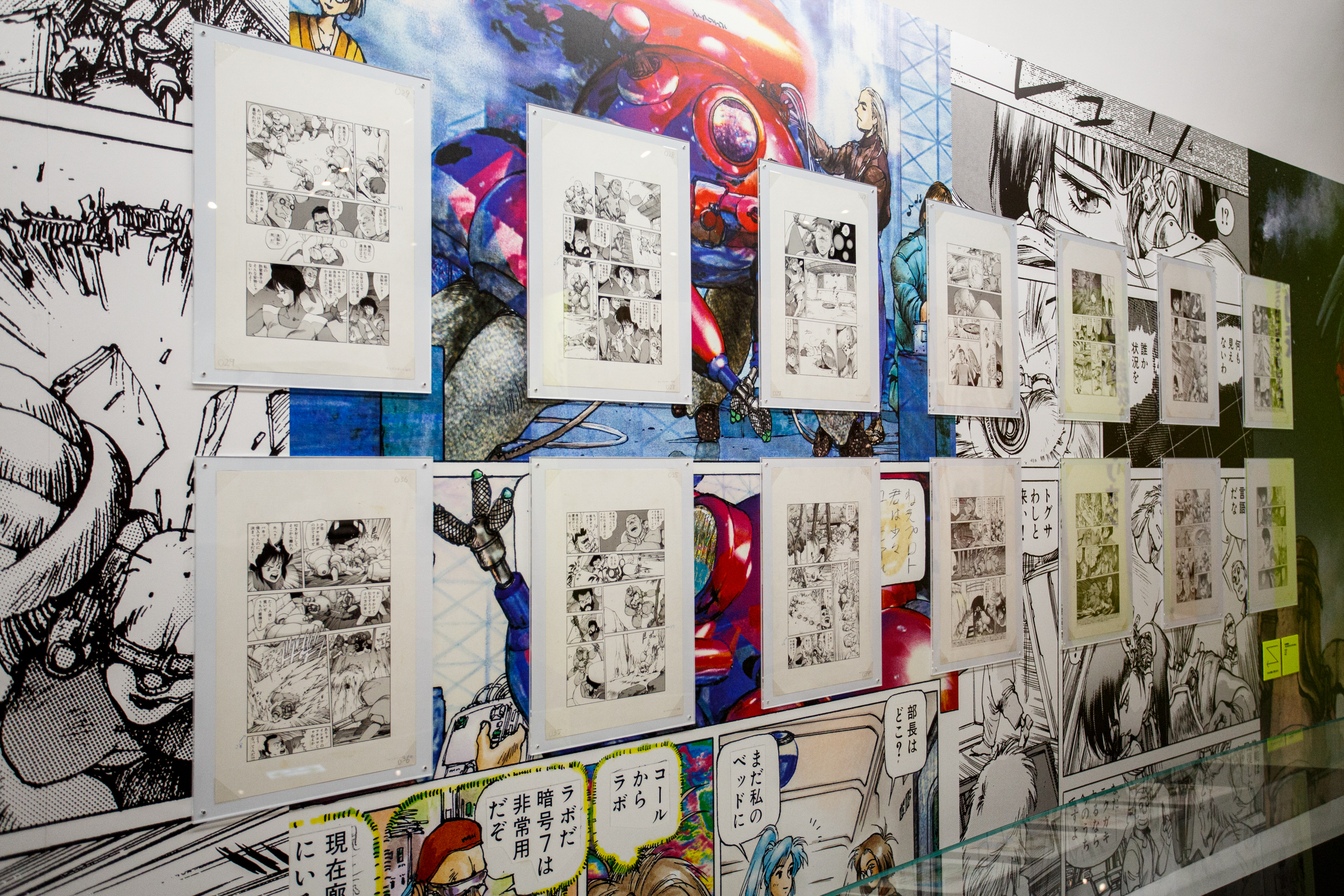
“Science fiction can’t always depict a run-down world approaching its end. It would be nice if the future was brighter.”
Just as he said in one of his few past interviews, Shirow Masamune is an artist who takes a positive stance on coexistence between humankind and our science and technology. This major solo exhibit marks the 40th anniversary of his career’s beginning. It should serve both as a chance to re-encounter the inspiration this great artist has imparted to the world and also as an opening to contemplate our future in light of current technologies. …
(THE END)

